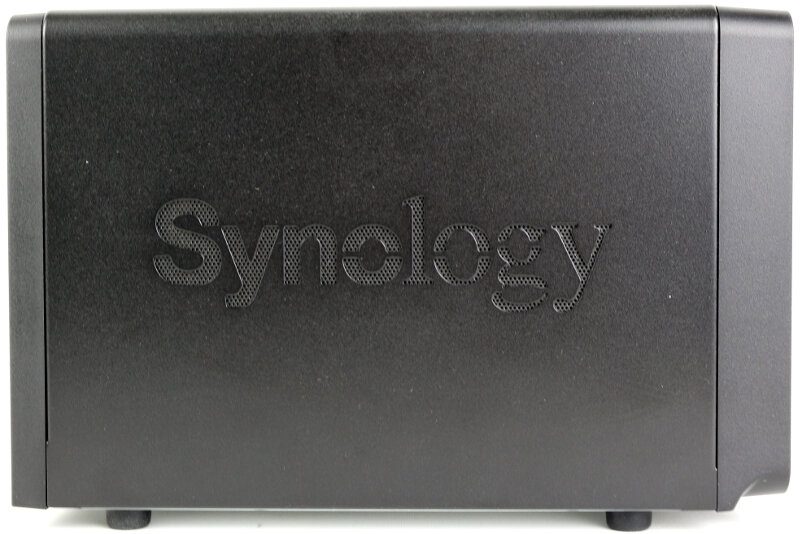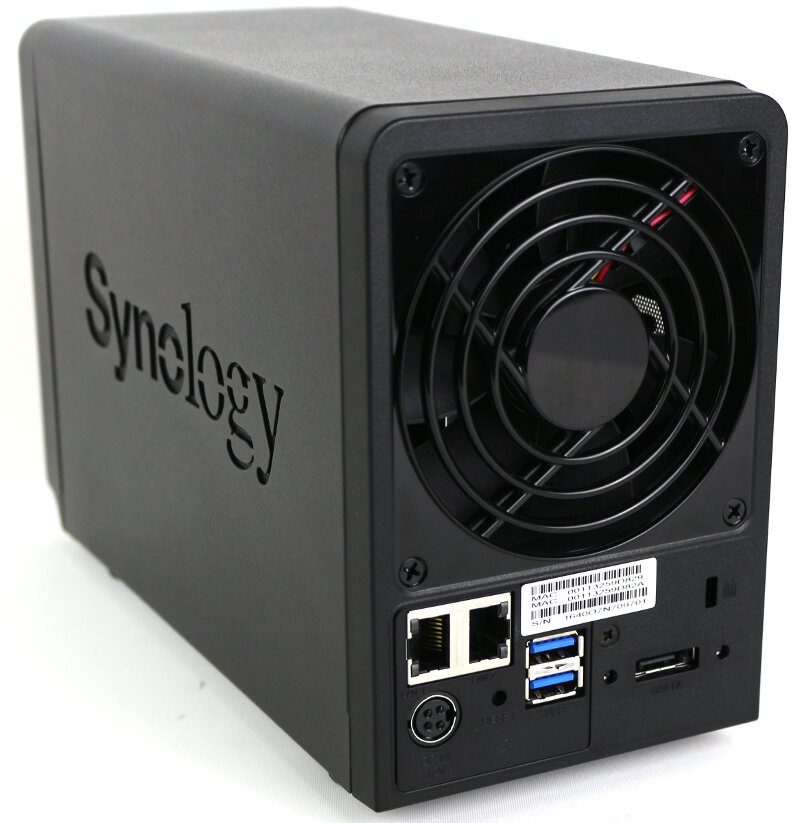Synology DiskStation DS716+II 2-Bay SMB NAS Review
Bohs Hansen / 7 years ago
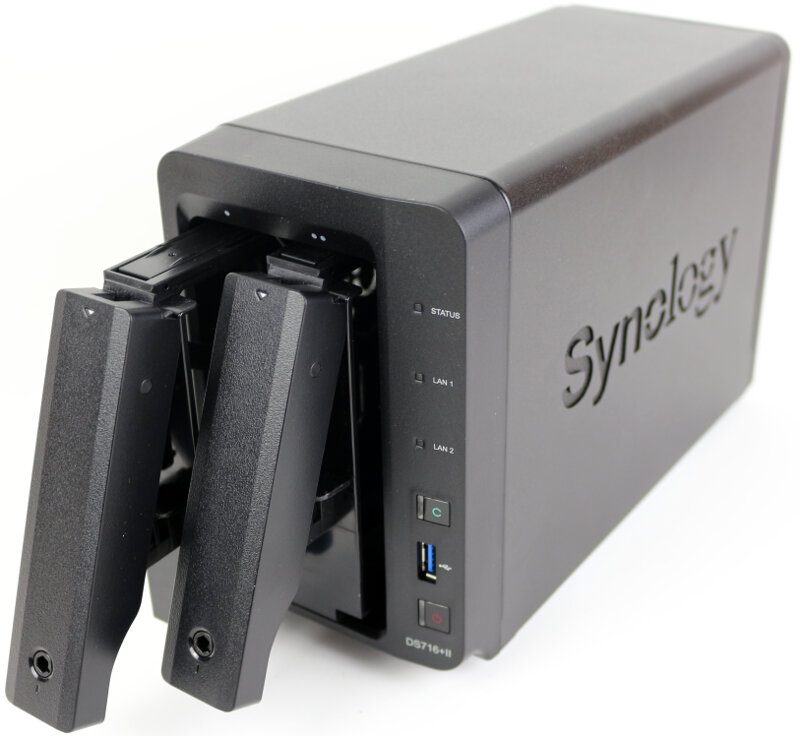
We have seen an ever increasing amount of features added to NAS devices, but Synology‘s DS716+II (Product Link) takes things back to the basics. And that is not a bad thing. The DS716+II focuses on what it is, a storage server, and does so with a great hardware base.
If you are looking for direct media output through HDMI or DisplayPort, or you want line-in and line-out connections for your stereo setup, then you’re out of luck. The DS716+II focuses on scalability and performance. That doesn’t mean that you can’t use it as a centralised storage for your media as it’s great for that too with its 4K transcoding abilities.
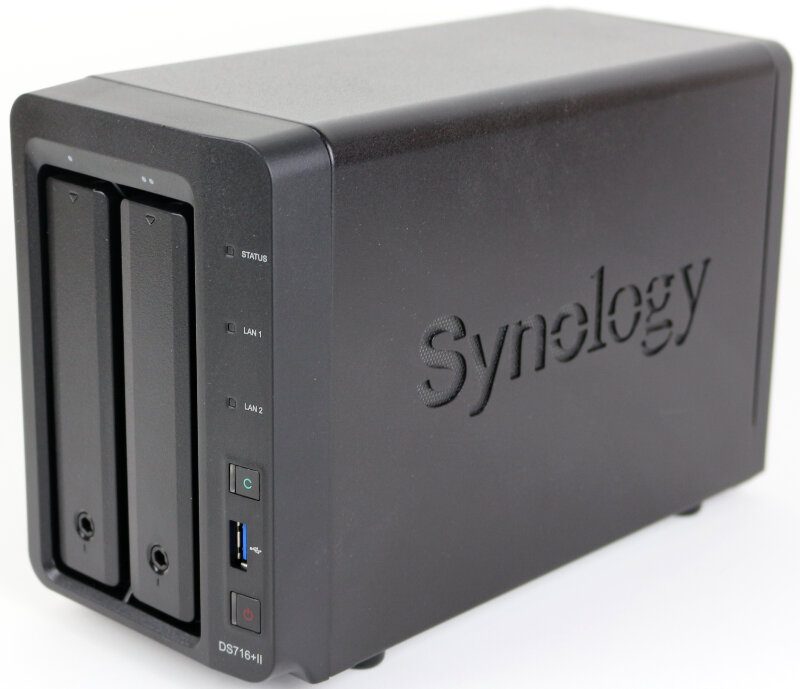
System and Performance
Synology built the DS716+II around an Intel Celeron N3160 64-bit processor. The quad-core processor features a 1.6GHz base clock with a burst speed up to 2.24GHz. It comes with built-in AES-NI hardware encryption engine and hardware transcoding engine for H.264 (AVC), H.265 (HEVC), MPEG-2 and VC-1 at a maximum resolution of 4K (4096 x 2160) and maximum frame rate per second (FPS) of 30.
The NAS features 2GB DDR3 memory in a single SO-DIMM module, and you can easily upgrade this to an 8GB module should you require more.
With that kind of hardware, the system can deliver an average reading and writing speeds of 226.1 MB/s and 141.19 MB/s respectively. Thanks to the built-in hardware encryption engine, it can maintain similar levels for encrypted file transfers. Here, it can exceed 226.09 MB/s reading and 138.04 MB/s writing. That means you can safeguard data without sacrificing performance.
Connections
Synology equipped the DS716+II with two Gigabit Ethernet ports. These ports, naturally, support failover setups and link aggregation and that will ensure that you have a continual network uptime even if a LAN connection should malfunction on one port, or you can go beyond the limitations of a single Gigabit Ethernet connection.
An expansion of the unit is quite easy thanks to the three USB 3.0 ports and one eSATA port. With these, you can connect external storage drives with ease, or you can connect an expansion unit for another five drive bays to add to your storage pool.
The USB ports also support wireless network dongles, allowing you to connect it to your network wirelessly or use it as an access point for your network.
Drive Bays and Expansion
Thanks to the tool-less drive bays, the installation of 3.5-inch drives are both quick and easy. The DS716+II also supports 2.5-inch drives, but you need to screw them into the drive trays in a traditional way. Naturally, the system supports hot-swapping of the drives.
You can also easily expand the two drive bays with five more by using the DX513 expansion enclosure. With this and 10TB drives, you can reach 70TB of raw capacity.
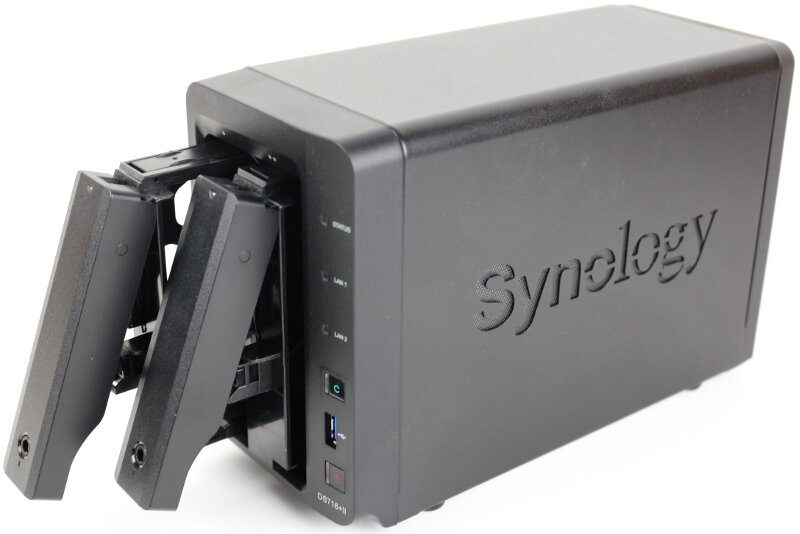
Hardware-Powered 4K UHD Video Transcoding
As mentioned above, the DS716+II comes with a hardware-accelerated transcoding engine. It will allow you to transcode and stream H.264 4K and 1080p videos to high-definition TV, digital media players, mobile handsets, and computers in the required format. It increases compatibility and saves bandwidth, making it easy to watch videos without having to install a 3rd party player. 4K transcoding is available only through Synology’s Video Station, DS video, Media Server
The 4K transcoding works natively with Synology’s Video Station, DS video, and Media Server. Third-party apps might still support transcoding, but they might not be able to access the hardware-accelerated feature.
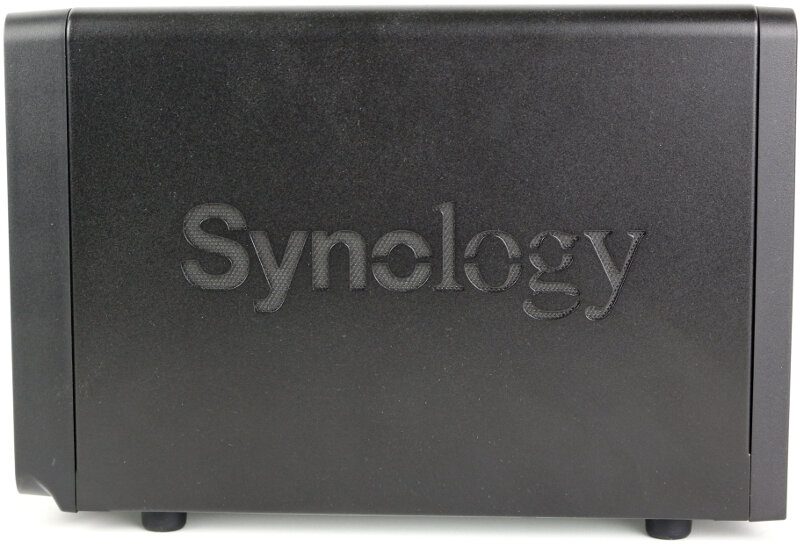
Cooling, Noise Level & Power Draw
You’ll barely notice the DS716+II running as it comes with a noise level rating of just 18dB. The low noise is thanks to the 92mm fan and the quiet operation mode.
You won’t experience a large electricity bill either with a power consumption of just 9.5W when the drives hibernate and 19W when data is accessed.
